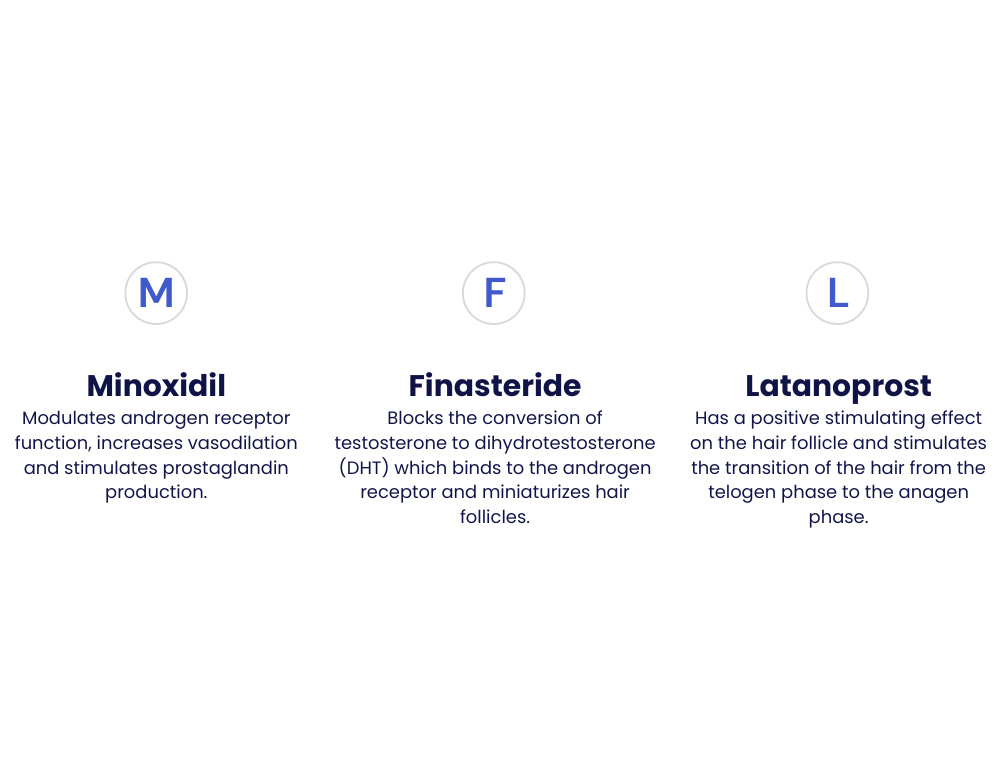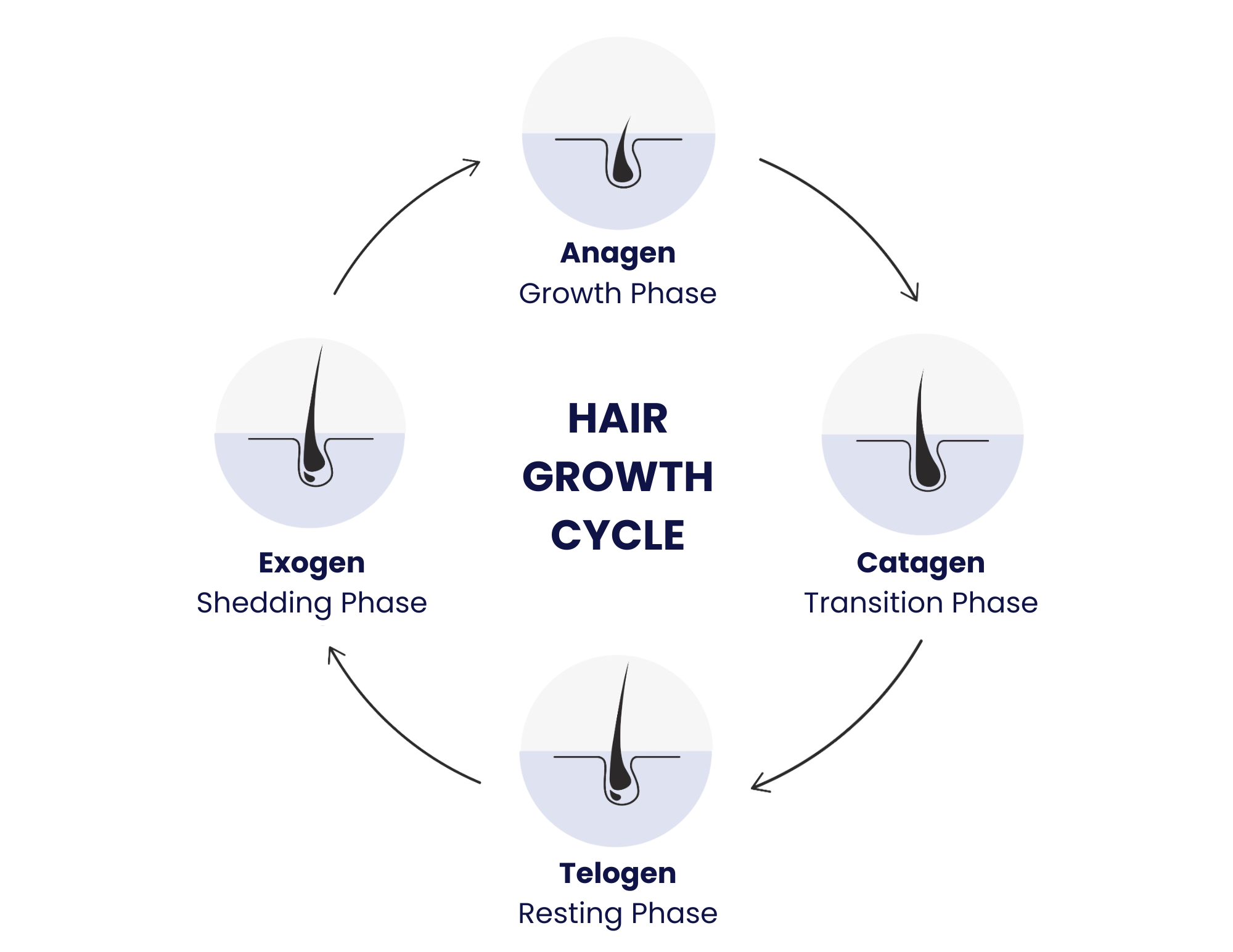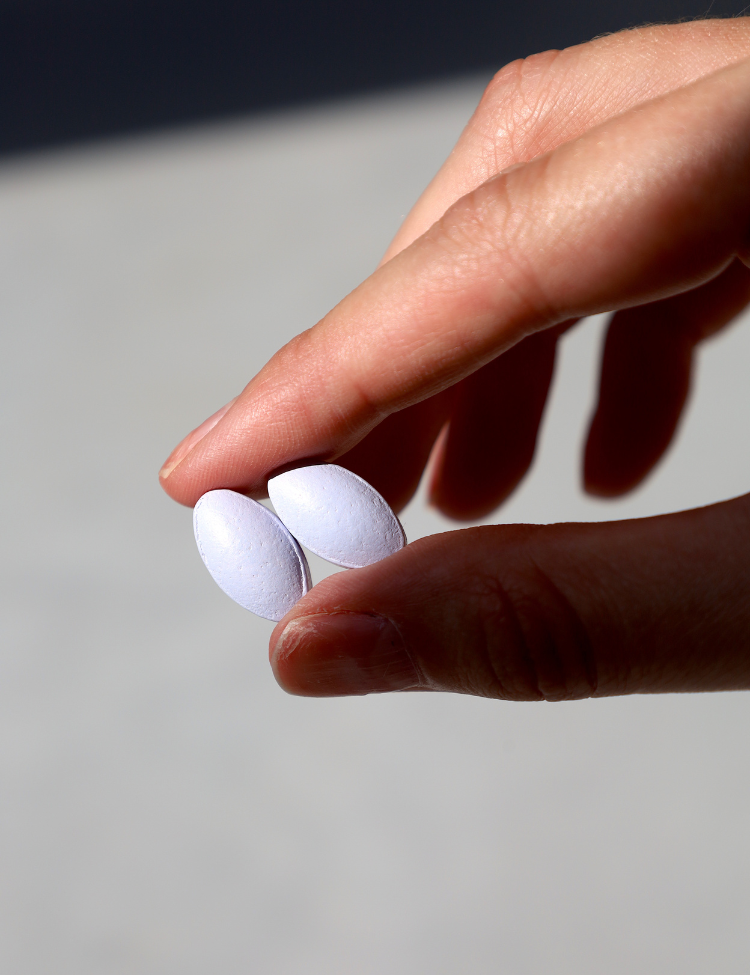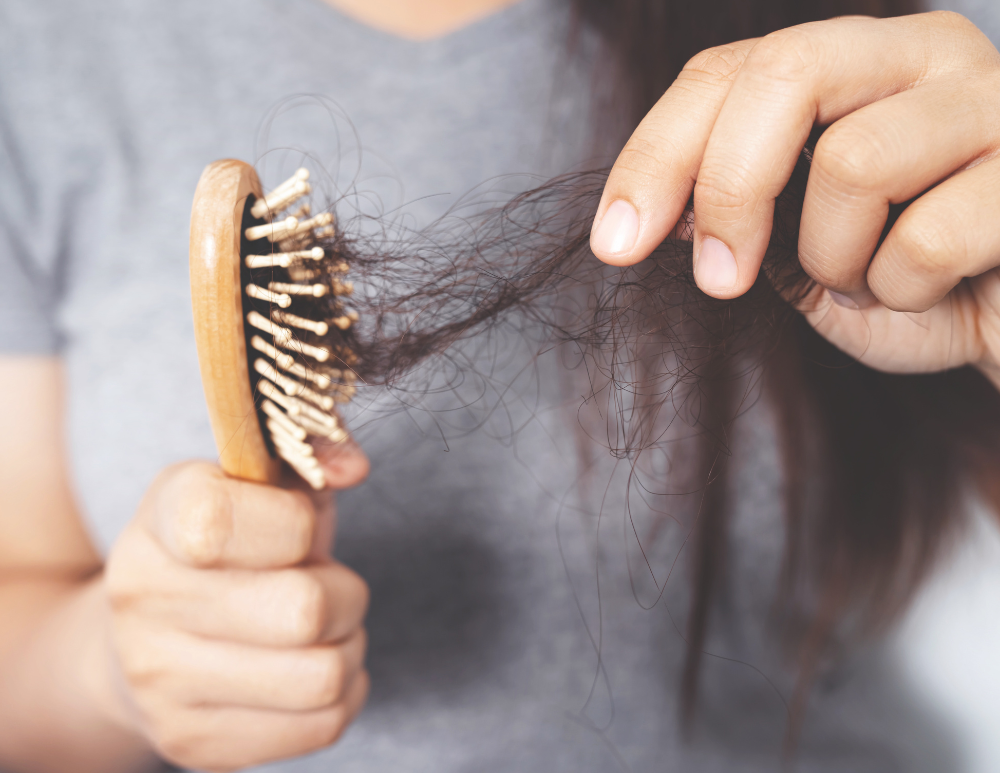Androgenic alopecia is a common form of hair loss that affects millions of men and women each year. One major cause of hair loss is a combination of genetic predisposition and hormonal changes that can’t be reversed without medical intervention. However, as this condition is multifactorial, this does leave many people wondering what causes it in the first place and how to reverse it.
Genetics and Androgenic Alopecia
Hair loss may be a common issue that many people face but there is an urban myth that hair loss comes from the mother’s side of the family. However, this myth barely scratches the surface of what is really going on. While it is true that genetics can play a role in hair loss, it isn’t limited to just one side of the family. In reality, both sides of the family are responsible for passing on genes that can make someone more likely to experience hair loss. One of the genes that appears to be linked to androgenic alopecia, through recent studies, is the AR gene (or the androgen receptor gene).
The AR gene is responsible for producing an enzyme called 5-alpha reductase which converts testosterone into dihydrotestosterone or DHT. DHT has been linked to the miniaturization of hair follicles and subsequent hair loss in those with androgenic alopecia. This suggests that individuals with certain variations in their AR gene may be more prone to developing androgenic alopecia than others. Essentially, their AR gene leads to more conversion of testosterone to DHT near hair follicles which then deteriorates their ability to grow healthy hair.
As the conversion of testosterone to DHT is a hormonal pathway, this conversion can be stopped by medication that works on a hormonal level. When taken orally, these medications lead to systemic hormonal changes and can therefore lead to undesirable side effects such as impotence, a decreased sex drive, etc. Therein lies the main advantage of spray combination therapies: the same medications that can reverse hair loss are applied directly to the scalp and affect only the area that needs to be treated.
Aging
Aging is also another major factor in hair loss. Hair follicles become less robust over time, meaning that they are more susceptible to damage and breakage. As follicles are weakened by hormonal changes caused by aging—namely a decrease in estrogen in women and testosterone in men—we begin to experience thinning of the scalp and visible bald spots. As hormone levels change, it can cause hair follicles to become weakened or dormant over time. This process is known as miniaturization and typically occurs gradually but is sped up when combined with other factors such as poor nutrition, genetics, or stress. In fact, research has found that 40% of all people aged 40-49 have some degree of visible hair loss due to aging.
Topical combination treatments can help to minimize these changes and optimize hair growth. The usage of a combination of effective ingredients has shown better results (2 to 4 times more hair growth) compared to when each ingredient is used individually. This is due to the fact that combination spray solutions take into consideration that androgenic alopecia is a multifactorial disease, where more than one root cause is often at play.

You can get access to topical combination prescriptions with a specialized clinician. To help patients find hair loss specialists, Triple Hair has developed the Hair Loss Rx Consult telemedicine platform. The hair loss consultation process is very simple and quick. The consultation begins with a comprehensive online form that is reviewed by a medical expert and culminates in the prescription of a medication tailored to the patient’s specific needs. “Online interactive messaging and medical data are encrypted to ensure the highest level of confidentiality”, explains Jean-Philippe Gravel, President and CEO of Triple Hair.
Insufficient Blood Flow
Another important cause of androgenic alopecia is decreased blood flow to the scalp. With decreased blood flow to the scalp, hair follicles don’t receive enough of the nutrients they need to grow. This leads the hair follicle to stop growing hair (which is the anagen phase) and accelerate towards shedding the hair it has grown (which is the exogen phase). If hair is falling out faster than it is being replaced (and this is often the case when hair follicles don’t receive the nutrients they need), it leads to thinning hair, balding, and androgenic alopecia.

To supply hair follicles with the nutrients they need, a good practice is to use a derma roller on a regular basis. A derma roller is a tool consisting of tiny needles on its surface that is used to puncture or ‘roll’ over the skin to create microlesions in the scalp, encouraging the body to circulate nutrients to these targeted areas and heal these micro-injuries. For those using a topical hair treatment, it also allows the penetration of topical alopecia treatments into deeper layers of skin tissue. Healthier hair growth is therefore stimulated in two ways: through the increased blood flow towards hair follicles, giving them the nutrients they need and through the increased penetration of topical alopecia treatments, crossing more easily the skin barrier.
As derma rollers can be used for hair loss but also to diminish the appearance of wrinkles and scars, it’s important to choose the right derma roller, one that will target the right depth of the scalp. That’s why Triple Hair’s Plenty Natural for women and RIZN for men offer a derma roller with 5mm needles.

Vitamin & Mineral Deficiencies
Brittle nails, dry skin, and hair loss? It’s possible that vitamin and mineral deficiencies are at play. A poor diet could be at fault but certain medications and certain medical conditions can leave the body depleted of the proper nutrients that hair follicles need to be healthy. The body prioritizes where reserves of vitamins and minerals are used and it so happens that the scalp is towards the bottom of its list. If you are experiencing hair loss and suspect it may be related to a vitamin deficiency, there are some vitamins that could help to reinvigorate your hair.
 Vitamin E is a powerful antioxidant that helps keep hair strong by encouraging the circulation of oxygen and nutrients, which can help prevent breakage and improve overall thickness. Additionally, vitamin E helps to protect against environmental damage caused by free radicals, such as UV exposure and pollution.
Vitamin E is a powerful antioxidant that helps keep hair strong by encouraging the circulation of oxygen and nutrients, which can help prevent breakage and improve overall thickness. Additionally, vitamin E helps to protect against environmental damage caused by free radicals, such as UV exposure and pollution.
Horsetail, or Equisetum arvense, is a wild green plant that is part of the fern family. It’s been used for centuries to treat hair problems such as hair loss and dandruff. The plant is rich in minerals such as silica, potassium, iron, and zinc which are essential for healthy hair growth. Silica helps strengthen the hair shafts while zinc assists with cell division and regeneration of skin cells. The result of supplementing with horsetail? Stronger hair follicles and improved circulation that leads to thicker, healthier locks.
Hydrolyzed collagen has also been found to boost elasticity and shine in hair when taken orally or applied as a topical solution. Collagen is actually the most abundant protein in our bodies and accounts for 75% of our skin and 30% of the proteins in our entire body. As we age, collagen production slows down which can lead to issues like thinning hair and wrinkles appearing on the skin. By taking hydrolyzed collagen, it helps to replenish this naturally occurring protein in our bodies, resulting in healthier-looking hair and smoother-looking skin.
By supplementing with hydrolyzed collagen, it can help reduce split ends, add volume, strengthen hair follicles to prevent breakage, and increase hydration levels in the scalp while restoring lost nutrients to promote healthy growth of your locks.
With these nutrients and more, Triple Hair’s Plenty Natural for women and RIZN for men offers multivitamins that were designed to favour the growth of healthy, strong hair.
Androgenic alopecia is a complex condition, where it can be difficult to pinpoint exactly what is causing hair loss for a specific person. By taking our online quiz, you can get a better idea of what might be causing your alopecia and how to treat it. There are many therapies available to treat androgenic alopecia, including drug-free topical combination hair solutions, topical combination medications, vitamins and minerals complex, and derma rollers. Taking proactive steps in managing symptoms can help those with this condition live a healthy life with confidence. No matter your age or gender, treatments exist that can make a difference.


